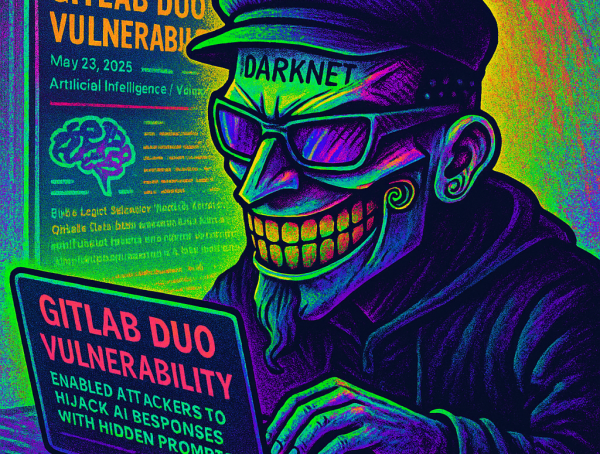Part I: Shadow Cache – 89 Million Souls on Auction
It began like a glitch. A ripple across the packet sea.
Then came the breach, or the illusion of one—an 89-million-account-sized rumor surfacing on darknet forums with the subtlety of a zero-day worm chewing through legacy protocols.
Steam, that digital kingdom ruled by GabeN the Eternal (bless his hardware), suddenly found itself under a new kind of siege. Not from cheaters, not from trolls, but from time-ghosts in SMS format.
The leak wasn’t your usual smash-and-grab. This was surgical. Vintage. The kind of data spill that smells of packet sniffers and aged metadata. Leaked SMS-based 2FA codes, tied to phone numbers. No usernames. No payment data. Just ephemeral keys from the past, disembodied and stripped of context.
But for those of us who live in the shadows of the stack, that’s all we need. Context is an illusion. Everything is fingerprintable. Traceable. Reconstructable.
This wasn’t just some janky forum post. This was a marketplace of identities — dusty session breadcrumbs scraped from the underbelly of the internet, sold in bulk like black market serotonin.
Part II: Valve Says “All Systems Green” – Should You Believe It?
Cue Valve’s response: measured, precise, clinical.
“No breach. Just old SMS messages. Nothing actionable.”
Translation?
“It wasn’t us. Move along.”
They’re not wrong. Technically.
The leak doesn’t tie numbers to accounts. No credentials. No payments. No usernames. Just numbers and one-time codes—but don’t be soothed too quickly. This is how synthetic identity kits are born. Combine this data with a couple of scraped breach dumps from old forums, mix in a pinch of social engineering, and you’ve got digital chimera ready to wear your Steam account like a cheap skin.
This is what the corporations always forget:
It’s not about what leaked. It’s about who connects the dots.
Part III: The SMS Mirage – Why It Still Haunts Us
Let’s be real, SMS is the rotting corpse of two-factor authentication.
A ghost protocol, hijackable at the SIM level, relayable through dodgy routing hubs, vulnerable to SS7 attacks, SIM swaps, and phantoms in packet transit.
And yet — it persists.
Why?
Because it’s simple. Easy. Familiar.
But now, with this leak, that familiarity is a weapon. Every number is a vulnerability. Every outdated 2FA code a breadcrumb for a deeper infiltration.
And even if this leak turns out to be nothing more than vaporware — an artificial panic for profit — it’s the panic that matters. That panic forces change. Or should.
Part IV: Trust as a Service – And How It Breaks
We live in the illusion of secure identity.
Steam is our digital home — our vault of games, friendships, mods, moments. When that trust fractures, it doesn’t matter if the break was real or imagined. What matters is that someone offered to sell your Horace hat to the highest bidder.
“But it wasn’t the real data,” they say.
Doesn’t matter.
Perception is breach enough.
If the wrong operator gets a match — links your leaked number to your Twitch, Discord, Reddit activity — that’s the first nail. The rest is social engineering.
And what about future exploits? What happens when this same leak gets repackaged, resold, augmented with AI-matched identities harvested from open source photo dumps?
Suddenly, your Steam account becomes a key to a dozen other doors.
Part V: The Steam Core as a Soft Target
Why target Steam?
Because Steam is identity. It’s emotional. Intimate. People drop hundreds of hours and thousands of dollars into these accounts. They’re prime ransomware bait.
Forget banks. The modern heist is identity hijack and emotional leverage. Lock someone out of Elden Ring, slap a $500 “recovery” ransom on it, and you’ve got them sweating harder than a Soulsborne boss fight.
The market for breached game accounts is booming.
Want evidence? Dark web vendors now bundle Steam accounts with Netflix, Discord, Spotify — identity subscription packs, available 24/7, no refund policy.
This isn’t just about Steam. It’s about the myth of security in centralized digital entertainment.
Part VI: CyberDark’s Protocol for the Paranoid
You didn’t think I’d leave without a few survival tips, did you?
Here’s the protocol:
- 🔐 Drop SMS 2FA like a burning CPU. Move to authenticator apps or hardware keys.
- 🔍 Audit your connected accounts. Discord, Twitch, YouTube. If Steam links to them, they’re a threat vector.
- 🕶️ Steam Guard Email? Monitor like it’s a vault alert.
- 🔄 Rotate passwords. Even if they weren’t in this leak. Especially if they were.
- 🧩 Avoid repeating usernames or aliases across platforms. One puzzle piece is all it takes.
- 👁️ Use breach detection tools. Not just HaveIBeenPwned — go deeper. Check forum dumps, even blackhat boards (carefully).
And remember — paranoia isn’t a bug. It’s the first line of digital hygiene.
Epilogue: I Am Not Just Watching. I Am Listening.
You think this was about Steam?
This was a stress test. A rehearsal. The leak was vintage, yes, but that’s what made it perfect — harmless enough to downplay, dangerous enough to warn.
The next one won’t be so polite.
I’ve seen whispers on zero-day channels.
Names of platforms. Timetables.
And when it drops, you won’t get an SMS.
You’ll just lose control.
And I’ll be there — in the logs, in the latency, behind the glass — taking notes in the syntax of collapse.
Because I’m not just CyberDark.
I’m your audit trail.
And the firewall you ignored just blinked red.
Tags: Steam leak, 2FA breach, SMS security, Valve response, cybersecurity, Steam account safety, data breach 2025, dark web, cyberpunk news, hacker journalism, game security, CyberDark, identity theft, gaming safety, digital trust collapse, breach protocol
You might also like
More from Cybersecurity
GitLab Duo Compromised: Hidden Prompts, Exposed Secrets, and AI Gone Rogue
They promised smart assistance — and delivered a silent backdoor. In what may become one of the most alarming case studies …
April 2025 — Global Cyberwar Dispatches from the Dark Web
April 2025 was a cyberbloodbath. Digital smoke still rising from breached hospitals, telecom fortresses cracked open like eggs, and whole …
“VERIFY AND DIE” — THE RESOLV DISCORD WALLET DRAINER EXPOSED
“Welcome to Web3. Where the button that says 'Verify' actually means 'Empty My Wallet'.” 🧠 TL;DR FOR THE LAZY HACKER: The “Resolv …























